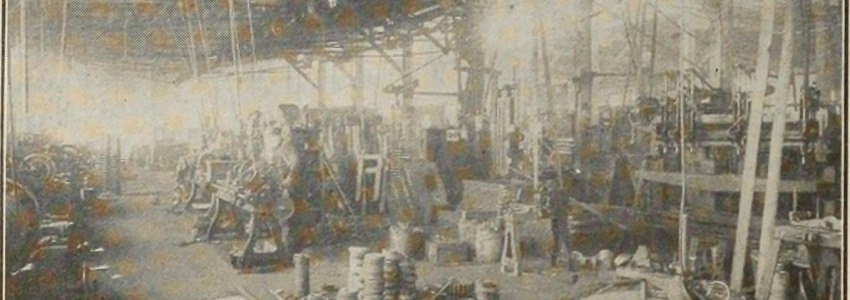
Kitmondo
10 Dec 2014
This article was originally published in Electrochemical and Metallurgical Industry Publication of October 1907. Information within this article is therefore correct as of 1907. The publication of this material aims to provide historical insight on the subject and its place in industry.
The Hoskins Co. of Chicago, who succeeded William Hoskins & Co. in 1905, have commenced the manufacture of the Hoskins electric furnace in addition to the well-known line of Hoskins hydro-carbon blow-pipes and furnaces, which have been on the market since 1880. In this new electric furnace a great reduction in the cost has been made possible by the use of a patented resistance wire that will not burn or melt at 1,000° C, and which oxidizes only a very little at this temperature, as a matter of fact, has a melting point above 1,400° C.
It is a well-known fact that nothing except platinum has heretofore been used for furnace work, and on account of the excessive cost only furnaces of very small capacity have been made. This wire has six times more electrical resistance than platinum wire, and owing to this greater resistance they are enabled to make a furnace without any rheostat or controlling device.
All the resistance wire being wound on the furnace the heat is developed in the furnace chamber, doing useful work instead of part of it being used in heating the air surrounding the rheostat as is usual in platinum wire furnaces. These muffle furnaces can be operated on the ordinary no-volt electric light circuit, either alternating or direct, for the smaller laboratory sizes.
The same company is also about to put on the market a special electric resistance furnace for alternating current only that will melt anything from lead to platinum.
These new furnaces will be applicable to every variety of melting and heating work, and at the low price at which they are sold should fill a demand for an electric resistance furnace large enough for all commercial melting operations up to 100 pounds capacity.
Electric Annealing and Hardening Furnace
On pages 365 and 514 of our Vol. IV we noticed an electric furnace for annealing and hardening tool steel. Its construction is of great simplicity. Two iron plates at the opposite ends of a vessel filled with a fused salt are connected to an alternating-current transformer. The Joulean effect of the current keeps the bath molten, and by regulation of the current it is easy to adjust the temperature very exactly and quickly. The tools to be hardened are placed within the fused salt. A furnace of this type, which is controlled jointly by the Allgemeine Elektricitats Gesellschaft, of Berlin, and by the General Electric Co. was shown in Mr. C. J. Russell's electric furnace exhibit at the last Philadelphia meeting of the American Electrochemical Society.
In an experimental lecture recently held by Mr. L. M. Cohn before the Vienna Electrical Society, some interesting figures as to cost were given. Comparative tests were made on the cost of hardening milling cutters in a gas furnace of American make and in an electric furnace of the above type. In the gas furnace several cutters could be hardened at the same time, while the electric furnace, which was available, was of such a size that only one cutter could be placed in it. Nevertheless, the hardening of 100 cutters required 50 hours in the gas furnace and only 10 hours in the electric furnace. This is simply due to the fact that the temperature in the electric furnace can be adjusted quickly and easily and is always under absolute control..
The cutters were preheated to about 4000 and then heated to 1,150° C and then cooled.
| Cost for the Gas Furnace | $ | | Cost for the Electric Muffle Furnace
| $ |
| 350 cubic meters of gas | 10.81 | | 200-kw. hours at 2.5 cents | 5.00 |
Power for blowing
| 1.25 | | Coke for preheating | .25 |
| Wages for 50 hours at 17.5 cents | 8.75 | | Wages for 10 hours at 17.5 cents | 1.75 |
|
| | Fresh barium chloride filled in | .14 |
| Total | 20.81 |
| Total | 7.14 |
This shows that under European conditions the electric muffle furnace was very considerably cheaper than the gas furnace. It is true the price charged for gas in this comparison is somewhat high and the price of electrical energy is somewhat low. But the decisive element—which would be even of much greater importance in this country—is the saving in time for the corresponding wages.
Image Credit:
Internet Archive Book Images
















